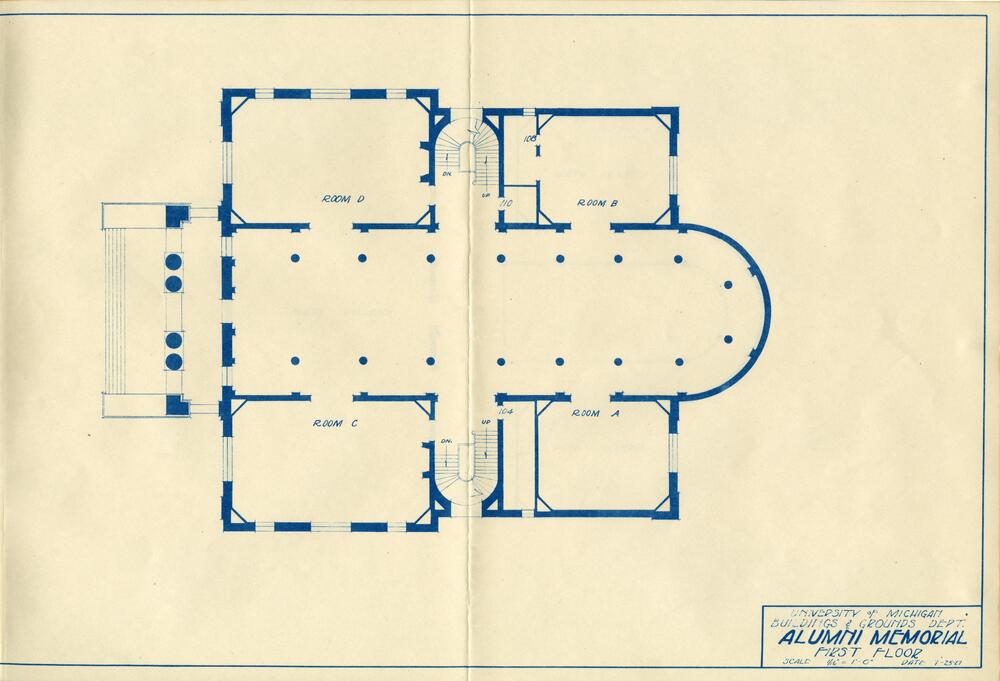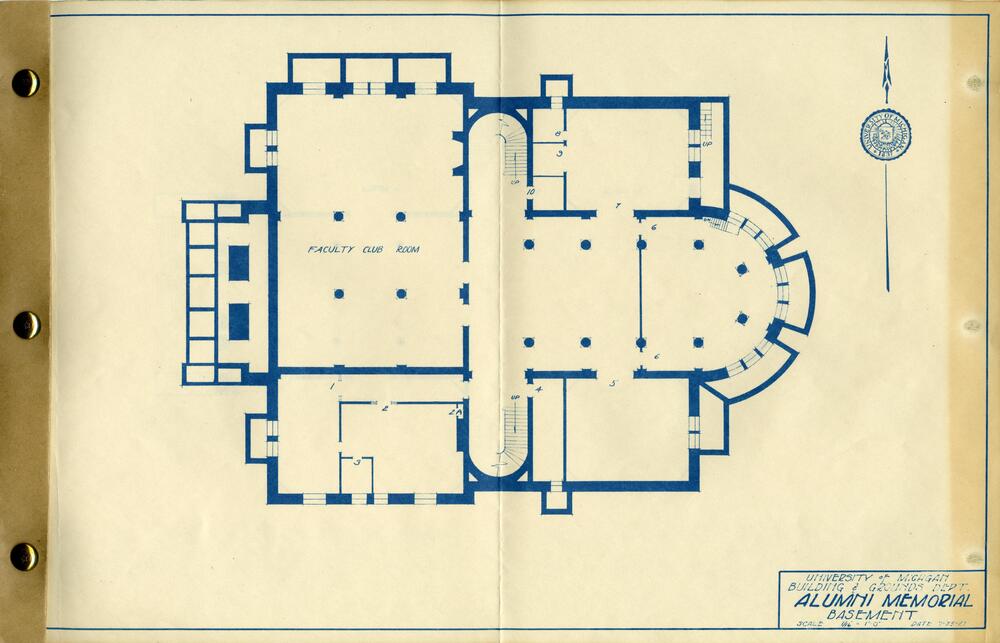Visual Analysis
Written by Jackson Selvala
For the visual analysis of Alumni Memorial Hall, it’s prudent first to consider the intended meaning and means of execution with this monument, as well as its historical significance and impact on culture, art, politics, and the social consciousness of the time. Constructed in 1910 to commemorate those U-M students who served in the Mexican war, the American Civil War, and the Spanish-American war, Alumni Memorial Hall is a beautiful monument, now part of the University of Michigan Museum of Art (UMMA). It’s an incredibly built stone building with a distinct flight of stairs leading up to four massive columns at its entrance. When this building was first constructed, it was unlike anything people on campus had seen. It was the only building with this neoclassical style on campus. Many people regarded this building as out of place due to its authentic architectural qualities compared to the surrounding buildings. Numerous Ann Arbor residents titled this structure the “White Elephant” because of its uniqueness. This building stood in all its grandeur and dignity for people to witness.
It includes a grand sandstone exterior with a neoclassical facade leading to a grand two-level hall with ionic columns superimposed upon Doric ones on the ground floor below. Two impressive bronze doors open into the main lobby and statuary hall, welcoming any visitor or interested artist. Alumni Memorial Hall harnesses quintessential neoclassical architectural characteristics such as grandeur of scale, simplicity of geometric forms, and dramatic use of columns. The front entrance displays this to any spectator standing in front of the building. One has to completely turn their head to glance up at the hall’s architectural beauty, placing the scale of the building into true perspective. The facade of the building utilizes simple geometry (hard lines), tight angles, points, squares, and some circles. The use of simple geometry is deliberate and enhances the visual impression of the building. The extensive use of columns (both inside and out) conveys neoclassical qualities and continues this ‘ode’ that the building has to grand-scale neoclassical volumes. The architects used different styles of columns (Doric and Ionic) to invoke Greco-Roman architecture further, all the while serving as a monument to those students and faculty who fought.
A symbolic feature of the facade that Donaldson and Meier decided to include was the ornaments of the facade carved on the front entrance. Laurel wreaths, as well as crowns, were common across Ancient Greece and Rome to signify glory, especially in sports, music, and poetry, but occasionally in war. This classical reference to the ancient world is associated with grief and mourning, and honoring a victor. The wreaths on the facade give glory to what the soldiers achieved and what this monument signifies. There could be some people of the time who viewed these wreaths with grief. However, the architects intend to honor those who served and supported this building’s purpose.
In addition to the wreaths and details of the facade, it’s worth noting that symmetrical qualities are used extensively throughout the building. The facade and interior have axial symmetry features to bring various elements together to establish a unified whole building. Also, the floor plan indicates a symmetrical interior layout to bring efficiency to the building’s construction and an aesthetically pleasing sentiment. It would make the most sense for a symmetrical floor plan to give easy people an easy walking route around the building’s interior.
Closely associating with class themes, the neoclassical architecture of Alumni Memorial Hall fell into the ‘City Beautiful Movement,’ with attempts to continue the reform philosophy of North American architecture and urban planning that flourished during the early 20th century. This movement was created to introduce the beautification process and monumental grandeur in cities. As for society in Ann Arbor, this building brought beauty to buildings in this city, although it might’ve seemed like a fish out of the water initially. Alumni Memorial Hall brought a new perspective on architecture to Washtenaw county and was the epitome of blending the old with the new.
Created For
K-12 EducatorK-12 Student
Museum Visitor
UMMA Docent
UMMA Staff
University Faculty
University Student
Rate this Resource
AVG: 0 | Ratings: 0
& Author Notes
All Rights ReservedLast Updated
December 10, 2022 6:20 p.m.Report
Reporting Policy



